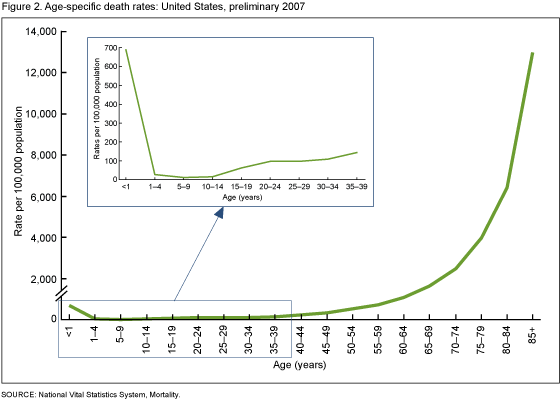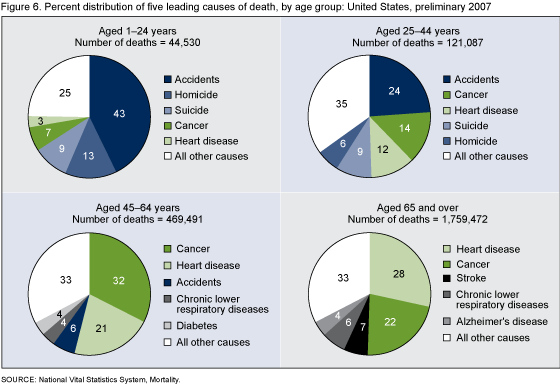RIP, Boomers: Death Comes For Us All
by meep
You really don’t want to know how many death-related posts I have in draft mode. The oldest one is from August 2014, but I don’t know if I ever want to post that one.
I know some people confuse me for a pension actuary, given that I post about pensions so much, but I’m actually a “life” actuary — my specialty is in life insurance, reinsurance, and annuities.
Which means I keep close tabs on death.
COMING IN THREES…. EXPECT A LOT MORE THAN THREE
There’s the old saying that death comes in threes… even the NY Times knows that’s partly bull:
The Upshot took a look at celebrity deaths, using data from The New York Times obituary archives. We defined “celebrity” as anyone whose obit ran at least 2,000 words, roughly two-thirds of a printed page when photos are added. (For comparison, Ms. Bacall’s was about 3,000 words. The longest, for Pope John Paul II, ran 13,363 words.)
Since 1990, 449 such people have died. In 75 cases, two of them died within three days of each other. But in only seven cases did three of them die within a five-day period. According to my colleague Boris Chen, a statistician, this is about what you’d expect by random chance.
That said, expect the rate to get much, much higher.
And it’s just a case of numbers: there are (and were) a lot of Boomers.
Let’s just look at the birth numbers in the U.S.:

Notice that it jumps starting in 1946 and really climbs into 1947 (there’s an obvious reason for that).
Note that the 4 notable deaths recently have birth years in that range: Lemmy Kilmister (December 1945), David Bowie (January 1947), Alan Rickman (February 1946), and Glenn Frey (November 1948).
Sure, Glenn Frey is a little younger than the others, but is still part of the early Boom (and Lemmy is in the tail end of the prior “generation”… these things smear).
Before the musical break, I want to point out that the peak of the Baby Boom did not occur until the late 1950s. We’re just seeing the early years.
NOW WE BREAK FOR SOME MUSIC
Just because.
I love that song. And video. It’s hard for me to be menaced by Trent Reznor. Just want to pat him on the head and tell him it will be all right.
Yes, I could make this all David Bowie videos, but let’s give the other guys a chance.
THE SUN WILL SHINE, AND PEOPLE WILL DIE
The pattern of U.S. births is not that different from other countries’ in post-WWII. There are country-specific stuff, especially for the losers in the war, and then the aspect of the UK being under austerity for a good decade due to socialists running the country, but let’s just go with the U.S. (though our recent examples also come from the UK).
The reason you’re going to see a lot of these deaths, increasingly, over the next two decades are:
- the pig in a python of the Baby Boom
- the oldest Boomers are entering their 70s this year…and mortality really kicks up as one gets to be over 70.
Let’s take a look at mortality rates!
These rates are from 2007, and I’m using this because it’s easily available.

Note that is deaths per 100,000. Notice how it really starts to climb for age 70-74 compared to earlier – it’s at about 2,000 per 100,000 — or 2% per year.
That sounds low, but when you’ve got a growing population in that age range, 2% is quite a lot. I could try to count how many well-known people were born in 1946 (yes, many have already pointed out Trump… and there’s some notables born in 1947) — yes, many are rich yadda yadda, but just assume 2% on that list will die sometime this year. That’s a lot of people. And there will be only more and more people.
Just wait til those born in the mid-1950s (Baby Boom peak) hit age 80 in the mid-2030s. They will really be dropping like flies.
And most are going to die from heart disease, stroke, or cancer:

So…. enjoy. I used to play dead pools, but that’s not so much fun anymore, especially as my own mother is a Boomer (my dad died of a heart attack when he was 38).
Oh, and here’s another mortality trend: more deaths in the winter.

So expect more celebrity deaths, and the “rule of three” may turn into the “rule of five” for a bit. Or they may shrink the window to count as “three”.
For the really nerdy, here’s something I wrote a few years ago: Variations on Approximation: An Exploration in Calculation, where I talk about approximating number of deaths of 40-year-olds in a population. It obviously can be extended to 70-year-olds.
Related Posts
Why Has Teen Mortality Increased 31% in 2 Years in the U.S.?
Ranking the states by COVID age-adjusted death rates, June 2023 edition
Mortality with Meep: Omega -- And Was the Oldest Person (Recorded) a Fraud?
